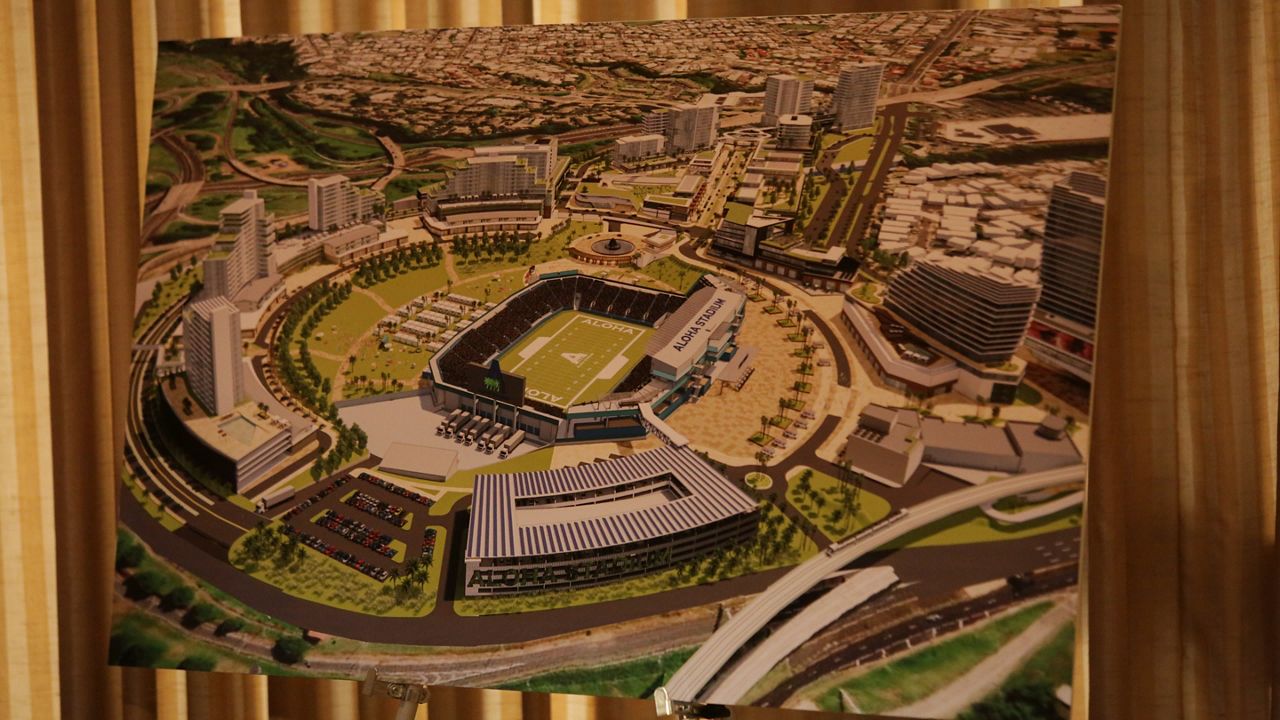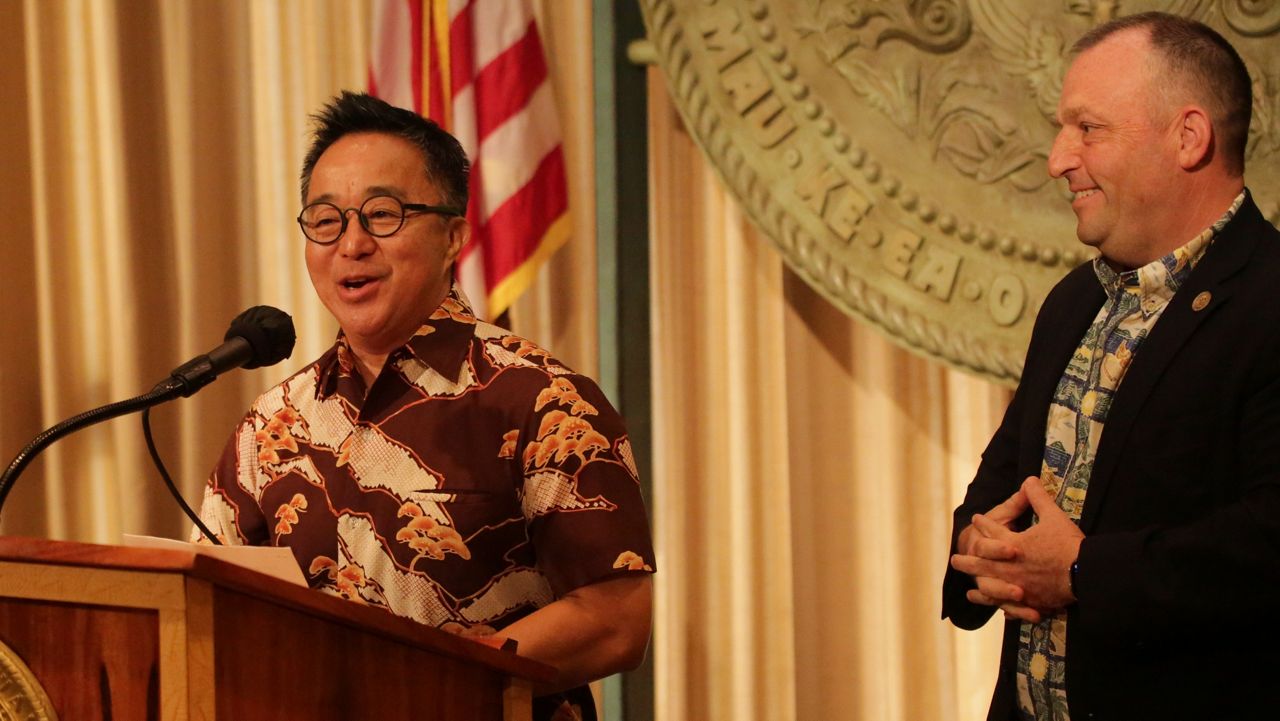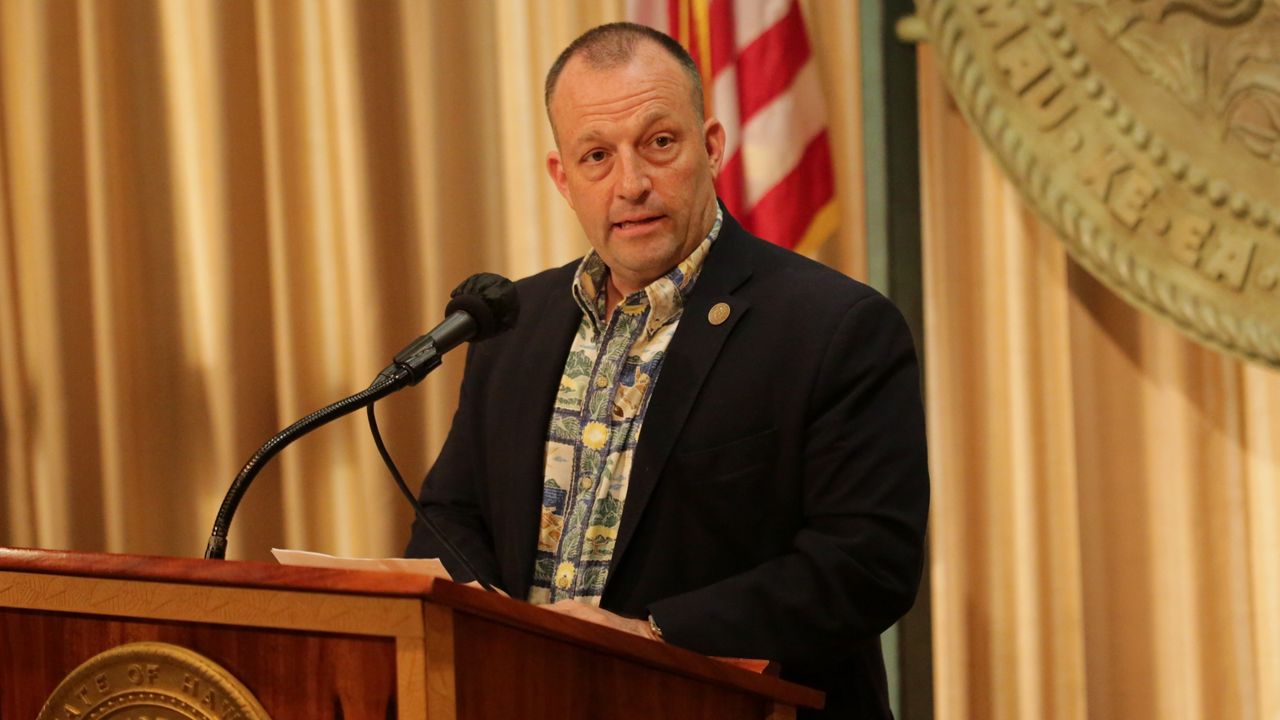HONOLULU — With smiles and slaps on the back, key stakeholders announced Thursday that the long-delayed New Aloha Stadium Entertainment District project reached the next step in its rebooted planning period.
Gov. Josh Green held a press conference in his fifth-floor Capitol chambers in which he, Stadium Authority members, state Legislators and University of Hawaii leaders discussed the release of a Request For Proposals document to private bidders, and endeavored to present a united front on the latest version of a planned public-private partnership.
Green said that given the large number of moving parts involved in the vision for the 98-acre Halawa site – between the stadium and housing components, plus various amenities, there are no shortage of issues – the successful execution of the project ultimately falls on his administration.
But Green, in marked contrast to his predecessor David Ige, appeared to relish the prospect, even as he acknowledged the state's long-term commitment to rebuilding fire-ravaged Lahaina.
“This is going to be very good for our young people,” he said. “We want them to have something to celebrate, whether it's a high school football program … (or) our college football team, which we know we want to support. We need to be a Division I program. So, having a stadium that is befitting of a great state is important.”
Green announced in April he’d scrapped the previous, two-pronged NASED procurements process that separated the P3 bids on the stadium and the outlying entertainment district, citing a heavy risk to taxpayers. He got stakeholders to line up in May behind the new, all-in-one approach with a single developer that set a firm cap on the state’s stadium contribution of $400 million.
The stadium, with a targeted finish date prior to the UH football season in 2028, will be one of the first orders of business for the eventual winning bidder under a 20-to-30-year Design, Build, Operate and Maintain (DBOM) plan.
Though the proposed NASED stadium’s specifications have been scaled back significantly from December 2020, when old Aloha Stadium was condemned, some specs have held firm for the last several months: a minimum requirement of 25,000 seats with 30 loge boxes and 16 suites, with the capability for future expansion, should it prove warranted.

UH Athletic Director Craig Angelos, who accompanied UH President David Lassner at the press briefing, said the NASED project was unlike the construction of the on-campus, 30,000-seat stadium he oversaw as the AD at Florida Atlantic in the early 2010s because of the state's commitment of funds and the extensive mixed-use component. There are expected to be 4,500 housing units on the Halawa site, with some 430,000 square feet of retail space and 120,000 square feet of office space, but most of that is expected to take much longer than the stadium to build on what has been designated an “enterprise zone” with certain tax incentives.
“I know there’s a lot of steps between now and Aug. 26, 2028, when we open against Kansas in that stadium, but to me it’s a good first step. We’re on our way,” Angelos said.
UH’s relationship with the Stadium Authority was historically rocky as it attempted to get allowances from its fellow state agency on things like parking and concessions. But while it is still negotiating its usage agreement on the new stadium, UH has secured a commitment that it will not pay rent, matching the arrangement from the latter years of the old stadium.
The Rainbow Warriors recently completed their third season at the 15,000-seat Clarence T.C. Ching Athletics Complex at the Manoa campus. While UH is fully in charge at that makeshift venue, Angelos and Lassner made clear their expectation is a permanent off-site stadium.
“There’s a lot of milestones to hit, but we’re optimistic,” Angelos said. “I think the main thing is for people to know that (UH is) all-in on this option, and let’s ride it as far as we can.”
The state has acknowledged the winning private bidder will have to assume some additional upfront cost for the stadium. And Green said issues that must be addressed in the NASED grand scheme include water access, synergy with Skyline Honolulu’s transit-oriented development and working with Halawa’s nearby military hubs.
Thursday’s release marked the first step of a three-part RFP procurement process, known as the qualifications phase, in which bidders will attempt to convince a NASED selection committee – a combination of Stadium Authority, Legislature and Green administration members – that they have the means to deliver on the multi-decade development.
The qualifications deadline is in February and the NASED team hopes to have the pool of bidders whittled down to a few contenders by April. Those teams’ proposals are due in the summer of 2024 with a master developer selection targeted for the fall. Officials hope to execute the NASED contract by the summer of 2025, at which point the husk of old Aloha Stadium can finally be torn down.
A series of “market-sounding” give-and-take discussions with prospective bidders over the summer revealed that some had concerns about the feasibility of the financial plan, in which the master developer would assume the bulk of the risk on the front end but theoretically stand to gain in the long term of a 99-year land lease agreement with the state.
Stadium Authority Chair Brennon Morioka said Thursday the NASED team heard the teams’ concerns and worked on a new financial model that included “value engineering” to save the winning bidder on some costs without sacrificing quality.
“In the short term, as the district is built out, we do acknowledge that there are some financial challenges that a developer or partner will have to buy into and overcome,” Morioka said. “That's why we are very much looking at having a partner who and a developer that is in it for the long term and for the development of the community.”
Three teams emerged as finalists from NASED’s last round of bidding before that procurement process was scrapped: Aloha Stadium District Partners, Aloha Stadium Hui Hilina‘i and Waiola Development Partners. They combined local, national and international experience.
“We're hoping for more, but we do know that the three who participated before are still interested,” Morioka said. “What the final number looks like is to be seen until we get the proposal and the qualifications in.”
Officials said Thursday that besides UH and high school football games, the stadium is expected to be in regular use for smaller events like graduations and concerts. Interest purportedly remains from United Soccer League and Major League Rugby to place franchises in Hawaii once the stadium is completed.
State Sen. Glenn Wakai, who represents the Halawa district, was invited by Green to make an impromptu speech at the press briefing.
Wakai, always one to have an analogy at the ready, noted that local residents had received proverbial lumps of coal in their stockings the last four holiday seasons as they awaited word of tangible stadium progress that never arrived.
“This,” Wakai said, “is quite a Christmas gift for the people of Hawaii.”

Brian McInnis covers the state's sports scene for Spectrum News Hawaii. He can be reached at brian.mcinnis@charter.com.



